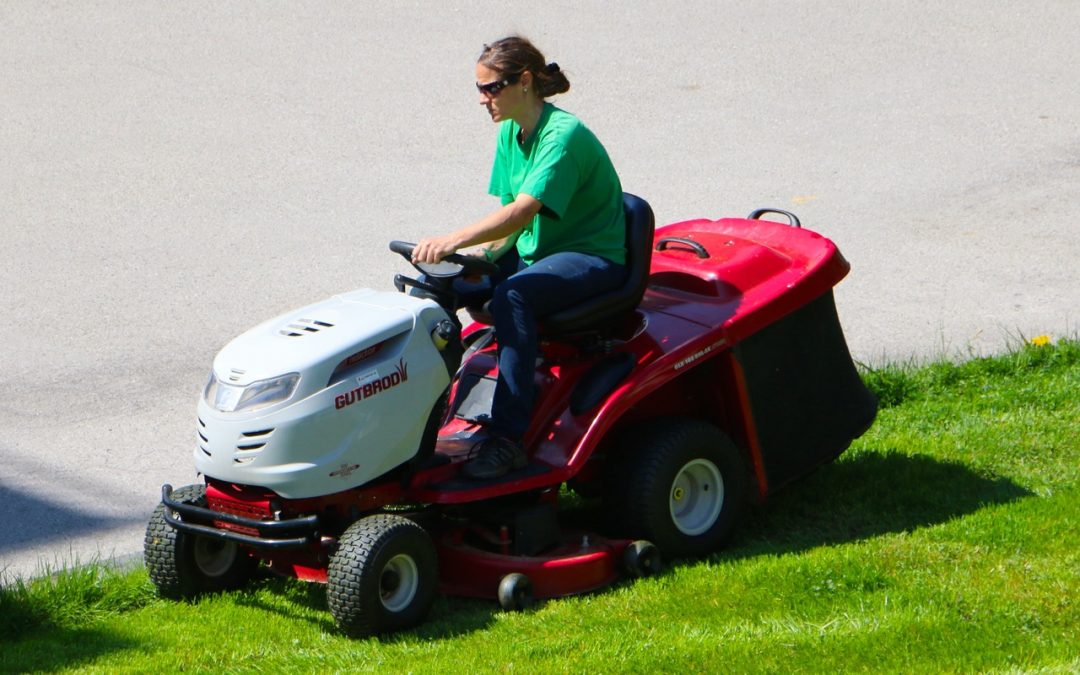Buying your first riding mower is a lot like buying your first car. It has a motor, a steering wheel and a seat.
And one more similarity: It’s a major investment. Where a push mower will set you back a few hundred dollars, a good low-end model or riding mower starts around $1,200. At the high end, you can easily You could spend anywhere from $1,000 to more than $3,000. But with that big price tag come big mowing advantages that you can expect to enjoy for years to come. Here are some pointers for buying your first riding mower.
With that big price tag come big mowing advantages that you can expect to enjoy for years to come. Here are some pointers for buying your first riding mower.
6 Tips for Choosing Your First Riding Lawn Mower
- The bigger the lawn, the bigger the mowing “deck.” For lawns of 1/4 acre to 1 acre, a 42-inch deck will do. For lawns of 1-2 acres, a 42- to 46-inch deck is good. For lawns 2-3 acres, a 46- to 54-inch deck is best.
- Consider the topography. Zero-turn mowers aren’t good for slopes.
- If you want to use attachments, choose a lawn tractor.
- If you buy used, ask the age of the mower, how often it was used, and why it’s for sale.
- If you buy new, read the owner’s manual and honor the engine “break-in period.”
- Maintain your mower and take advantage of dealer offers for annual inspections.
History of the Lawn Mower
We’ve been obsessed with lawn care for as long as lawns have been around. Until the 1600s, people were probably too busy focusing on the sheep trimming our grass to enjoy the lawns themselves. But beginning in the 1700s, manicured lawns came into fashion, along with the first lawn mower — the scythe.
For those unfamiliar, the scythe is an ancient tool with a handle and crescent-shaped blade. It’s carried by the mythical Grim Reaper — an appropriate mascot, because anyone who’s used one for more than an hour probably feels like keeling over. This labor-intensive tool was the go-to for lawn care for a couple of centuries. In 1830, Edwin Budding invented an iron-framed reel lawn mower to cut grass in England.
In 1870, a lighter cylinder-style reel mower was invented in the United States by Elwood McGuire of Richmond, Ind. This popular model prevailed until Colonel Edwin S. George came up with a mower with a gas engine in 1919. George established Moto-Mower, a lawn mowing manufacturing plant in Detroit, and continued to develop the product.
In the 1930s, a rotary mower appeared on the scene, paving the way for the ride on mower we know and love today. Mowers grew in popularity after World War II, when GIs came home and began mowing their own lawns.
Types of Riding Mowers
Today, we have a staggering number of lawn mowing options. Once you level up to a riding mower, there are many options available. Ride-on mowers fall into three categories: lawn tractor, rear-engine riding mower, and zero-turn mowers. If you want what they use on golf courses, forget about it, that’s another class of mowing machines entirely.
Lawn Tractor
A lawn or garden tractor is what most people choose as their first riding mower. It features a steering wheel and front-mounted engine, which makes it look and feel less like a power mower and more like a car. With mower decks measuring between 42 and 54 inches, they have a much greater cutting capacity than push lawn mowers, making them a top pick for people with acreage.
An added bonus of lawn tractors? They can haul carts and attachments for mulching, bagging, and sweeping. Some brands even offer a snowblower attachment. If you google “the best lawn tractors,” you’ll see John Deere and Toro come up over and over. Expect to spend between $1,000 and $3000 for one of these lawn mowers.
Zero-turn mower
A zero-turn mower is ideal when you have a lot of grass to cut and don’t want to spend a ton of time doing it. Mower decks range from 32 to 60 inches, and steering function allows the mower to make tight turns, hugging corners and curves.
For flatter properties with lots of trees and shrubs, this type of riding mower can cut grass closer to obstacles than the others. But, this perk comes at a price. Expect to pay between $1,200 and $6,000 for a zero-turn mower. Even if you can find a special offer, the prices on this class of machine are steep.
Rear-Engine Riding Mower
Somewhere between the lawn tractor and the zero-turn mower is the rear-engine riding mower. This is for someone with a lawn a little too large for a push mower but too small to justify a bigger machine. Mowing decks on rear-engine mowers are smaller, from 30 to 33 inches, and so is the price tag — from $1,200 to $2,400.
What About a Used Mower?
You can pay half as much by buying a used lawn mower, but you must do your research to make sure you get a good deal. Robert Janis, a mower specialist at LawnEq, reminds us, “You need to be aware that the life expectancy of a residential riding lawn mower is about seven years.” When attempting to buy a used mower, he believes that you shouldn’t be shy about asking questions.

